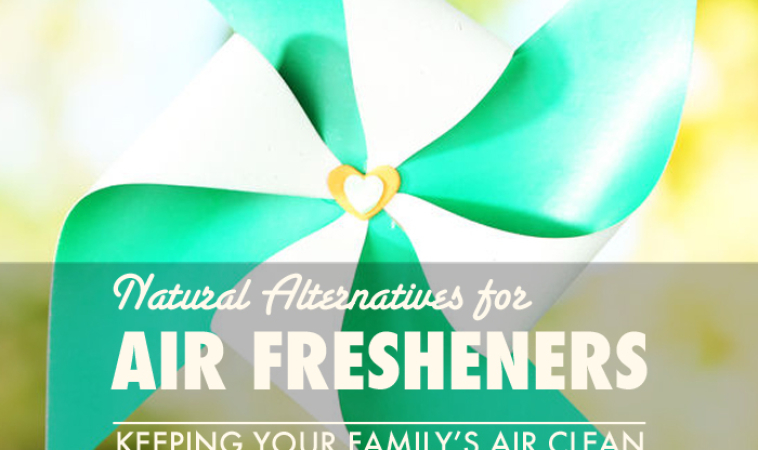Synthetic fragrance products are marketed to us as improving our social environments. But are they safe? In a word, no. What are the alternatives when “cleaner” or “fresher” air is needed? In a multi-article series, this the fourth and final, we’ve addressed these questions.
In Part 1, we learned that scents and aerosolized particles penetrate a special opening in the skull and travel directly to the interior area of the brain known as the limbic area, a complex center regulating emotions, mood, motivation, memory and learning, pain and pleasure, the release of several hormones affecting our sexuality¹ and discovered to be involved in epileptic seizures.² We also learned that manufacturers are not required by the FDA to disclose “trade secrets” (ingredients), among them “VOC”s³ (Volatile Organic Compounds) neurotoxins and suspected carcinogens.
In Part 2 we learned that the brain has an enzymatic detoxification system similar to but with a smaller capacity than the same system known to exist in the liver ⁴– the Cytochrome P450 system (CYP); that when the brain CYP is unable to sufficiently cope, observed effects include reproductive disturbances, learning disabilities and higher risk for childhood brain tumors among children of exposed parents.⁵
In Part 3, we considered, as an alternative, Aromatherapy, the historic, medicinal and even clinical use of essential oils of plants since ancient times by the Chinese, Indian and Egyptian cultures, with a time tested list of attributes including, “relaxing,” “anxiety easing,” “uplifting,” and “improving mental concentration.” In the 20th Century, French scientists codified data on more than 270 essential oils for clinical use (including as antibiotic). Healthful and historic, Aromatherapy offered several “air freshening” options.
In Part 4, two other alternatives: Negative Ion generation, and, Indoor Plants as natural air purifiers.
Negative Ions
An ion is an electrically charged particle, either positive or negative. Negatively charged air and water molecules are found naturally in abundance around waterfalls, in the mountains, at the seashore and after thunderstorms, due to molecular collisions resulting in a redistribution of electrical charge — or ionization. Without the use of a negative ion generator — physical, such as an interior water fall installation, or electrical — negative ion concentrations tend to be significantly lower within concrete indoor spaces, especially under air conditioning, and urban areas in general.
Air purification is one of the health benefits of negative ions, occurring when negatively charged particles meet and neutralize positively charged particles such as dust, pollen, mold spores, pet dander and even bacteria. “A recent study by the US Dept. of Agriculture found that ionising (sic) a room led to 52% less dust in the air, and 95% less bacteria in the air.”⁶ Russian and European hospitals are said to mandate use of negative ionization.⁶
Another welcome benefit of negative ion generation is that people feel better. Dr. Pierce J. Howard, author and expert on brain health and work place environments, writes that negative ions improve oxygen flow to our brains. Negative ions may also raise serotonin levels.⁷
The semi-precious stone, Tourmaline, discovered in Sri Lanka in 1703, is known to steadily emit negative ions, as well as the beneficial alpha waves and far infrared rays (FIRs), even when crushed, pulverized and fixed into bracelets for a personal negative ion “cloud”. Bracelets retail for $20-$40, with a seemingly lifetime usage.
Other options for increasing the negative ion concentration of your environment include plug-in negative ion generators, some with USB adaptors for use in your personal space at work, available for $20-$25, or larger units at greater cost for larger spaces.
Indoor Plants
While all plants naturally “filter the air” by converting carbon dioxide (CO₂) to oxygen, Dr. Bill Wolverton, NASA researcher and scientist, found that some plants also efficiently filter certain chemicals, especially formaldehyde.
Ironically, one of the most common ingredients of commercial air fresheners & bacteriocides, as well as modern home building products and furnishings, is formaldehyde.
The efficient chemical filtering plants tend to be tropicals, perhaps another great benefit of the earth’s tropical rain forests. Due to an environmental adaptation and through an interchange with the soil, these tropicals may also reduce molds and bacteria as much as 60%.⁸
In a rating of 1-10, with 10 as best filterer, the Boston Fern (Nephrolepsis exalta Bostoniensis) ranked highest, with the caveat to never let its’ soil go dry.
Ranking 9th: Kimberly Queen Fern (Nephrolepsis obliterata ‘Kimberly Queen’) — tolerates low indoor humidity better than the Boston Fern; and the Bamboo Palm (Chamaedora seifrizii) — very easy to grow & very effective.
Ranking 8th: Peace Lily (Spathiphylum wallisii) — resembling the Calla lily and easy; Areca Palm (Chrysalidocarpus lutescens) — grows to about 6 ft. tall; and Weeping Fig (Ficus benjamina) — drops leaves.
Ranking 7th: Ficus Alii (Ficus Sabre longifolia binnadijkii Alii) — less leaf drop than Weeping fig; and Dieffenbachia spp., especially Dumb Cane (D. amoena) and Spotted Dumb Cane (D. maculata) — leaves toxic if chewed by children or dogs.
For those with a green thumb, indoor plants are probably the least expensive, most truly refreshing and most natural option in air freshening an interior space. They might also be effectively combined with any other “air freshener” including the less desirable, from a health perspective, i.e., formaldehyde containing synthetics. Dr. Wolverton recommends, generally, one plant/100 sq. ft. Even at ratios significantly below that, plants remind us, considering our technological advances, we are natural beings bettered by balance and we like to be where we feel well. A look around in your local indoor mall or your favorite restaurant for ‘atmosphere’ you’ll probably find an abundance of these plants. Think that’s a coincidence.
 Katy Nelson, ND, (Bastyr ’94), with an office since 1997 in Michigan’s rural Upper Peninsula on the shores of beautiful Lake Superior, promotes our Nature devoted profession through consultation, writing and mentoring. She is joined by Bastyr grad, former mentoree and Pediatric specialist, Alicia Smith Dambeck, LAc CH (also ad locum in St. Paul with Amy Johnson Grass, ND). Since 2011, Dr. Katy has been ad locum herself in SW FL for family matters.
Katy Nelson, ND, (Bastyr ’94), with an office since 1997 in Michigan’s rural Upper Peninsula on the shores of beautiful Lake Superior, promotes our Nature devoted profession through consultation, writing and mentoring. She is joined by Bastyr grad, former mentoree and Pediatric specialist, Alicia Smith Dambeck, LAc CH (also ad locum in St. Paul with Amy Johnson Grass, ND). Since 2011, Dr. Katy has been ad locum herself in SW FL for family matters.
References:
- Vokshoor, A, Meyers, AD. Olfactory System Anatomy. : Overview, Olfactory Epithelium, Olfactory Nerve and the Cribriform Plate. 2013. Available at: http://emedicine.medscape.com/article/835585-overview. Accessed June 15, 2015.
- Nouri, S. Epilepsy and the Autonomic Nervous System. Benbadis SR, ed., eds. : Overview, Methodology, Ictal (Peri-ictal) Autonomic Changes. 2013. Available at: http://emedicine.medscape.com/article/1186872-overview. Accessed June 28, 2015.
- Volatile Organic Compounds (VOCs). Definition Page. 2014. Available at: http:// toxics.usgs.gov/definitions/vocs.html. Accessed June 28, 2015.
- Andersson, T, Goksøyr, A. Distribution and induction of cytochrome P450 1A1 in the rainbow trout brain. Fish Physiol Biochem Fish Physiology and Biochemistry. 1994;13(4):335–342. doi:10.1007/bf00003438.
- Jedrychowski, WA, Perera, FP, Camann, D, et al. Prenatal exposure to polycyclic aromatic hydrocarbons and cognitive dysfunction in children. Environ Sci Pollut Res Environmental Science and Pollution Research. 2014;22(5):3631–3639. doi:10.1007/s11356-014-3627-8.
- What are Negative Ions? What are Negative Ions? Available at: http://ionic-balance.com/technology/what-are-negative-ions. Accessed August 17, 2015.
- Mann, D. Negative Ions Create Positive Vibes. WebMD. Available at: http://www.webmd.com/balance/features/negative-ions-create-positive-vibes. Accessed August 17, 2015.
- Erickson, L. Houseplants can purify your air the natural way. SFGate. 2003. Available at: http://www.sfgate.com/homeandgarden/article/houseplants-can-purify-your-air-the-natural-way-2685781.php. Accessed August 17, 2015.
















